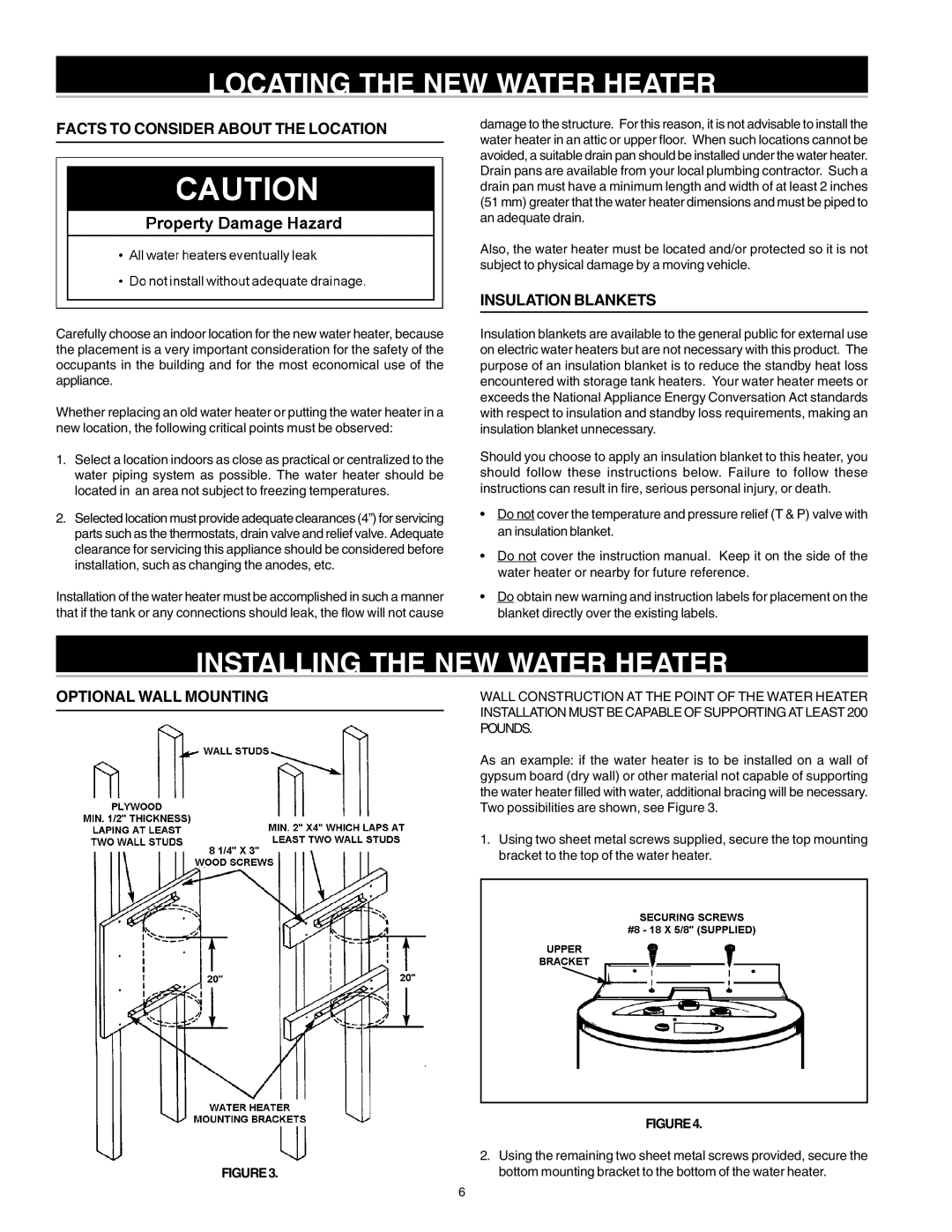184735-000 specifications
State Industries is a prominent manufacturer known for its wide range of high-quality heating and cooling equipment, and the model number 184735-000 is a noteworthy example of its innovative product offerings. This particular model is designed to meet the demands of both residential and commercial settings, providing efficient solutions for temperature control.One of the main features of the State Industries 184735-000 is its robust construction, ensuring durability and longevity even under the most demanding conditions. The unit is built with corrosion-resistant materials, making it a reliable choice for various environments, whether in humid coastal areas or dry inland regions. This factor significantly enhances its appeal to consumers who prioritize reliability in their heating and cooling systems.
In terms of technology, the 184735-000 incorporates advanced engineering principles that optimize energy efficiency. The unit is designed to adhere to modern energy standards and has potential for energy savings through its innovative compressor design. This technology not only reduces operational costs but also contributes to a reduced carbon footprint, making it an environmentally responsible choice.
The heating element in the State Industries 184735-000 utilizes state-of-the-art heating technology, providing rapid and efficient heating. This is particularly beneficial during colder months, ensuring that indoor spaces maintain a consistent and comfortable temperature. Additionally, it features user-friendly controls that allow for easy temperature adjustments, accommodating the varying preferences of different users.
Another characteristic worth mentioning is the unit's adaptability. The State Industries 184735-000 can be integrated with existing HVAC systems, enabling seamless installation and compatibility with current infrastructure. This aspect is crucial for both homeowners looking to upgrade their systems and businesses seeking to improve energy efficiency without a complete overhaul.
Furthermore, the model comes equipped with comprehensive safety features, including overheat protection and automatic shut-off mechanisms, ensuring safe operation even in the event of an unexpected malfunction. These features not only enhance user confidence but also contribute to the overall longevity of the unit.
In conclusion, the State Industries 184735-000 is designed with a focus on efficiency, durability, and user-friendliness. Its advanced technologies and robust construction make it a valuable asset for anyone seeking reliable heating and cooling solutions. Whether for residential or commercial use, this model stands out as a testament to State Industries' commitment to quality and innovation in the HVAC industry.

